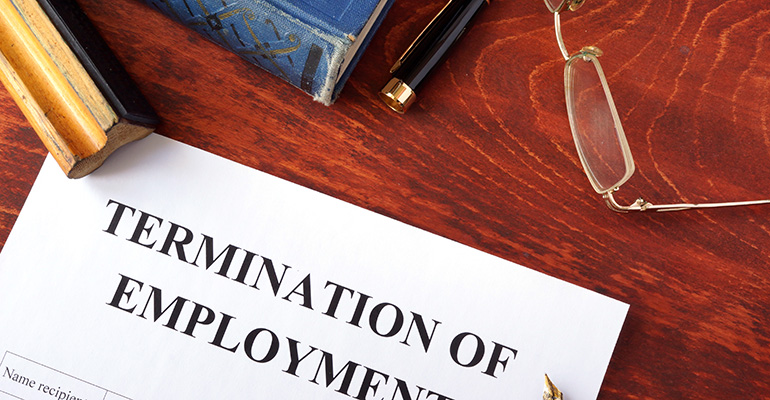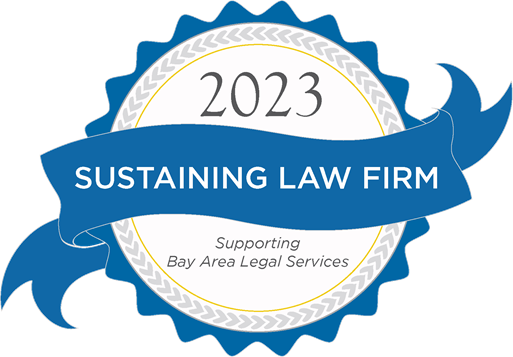
7 Steps to Dealing with Wrongful Termination

Your employer just let you go and you’re trying to wrap your head around the idea of being unemployed. You’re still not even sure why it happened. You performed well. Did what you were told. You were recognized as an asset to your team. So why are you unemployed?
You have that nagging feeling that this could be related to that other issue, the one you don’t want to believe was at the root of your termination. How could your employer fire you for that?
If there’s something that’s been bothering you about your dismissal, if you think you may have been fired because of discrimination, retaliation, a breach of public policy, requests for payment of wages owed or overtime pay, questioning your job classification, or filing a claim for workers’ compensation benefits, you may have been wrongfully terminated.
If that’s the case, here’s what you need to do.
7 Ways to Handle Wrongful Termination
-
-
Process the Job Termination Emotionally
-
Give yourself some time to grieve your job loss but not too much time because there are statutes of limitations when it comes to filing a claim. Take the time to process it mentally as this will allow you to progress to the next step with a clearer mind.
-
-
Gather Documentation
-
Gather documentation that supports your belief that you may have been wrongfully terminated. This includes copies of emails and other correspondence, names of fellow employees who may have witnessed discriminatory actions or other negative employment actions against you, and take down notes now on what you can remember.
-
-
Speak to HR
-
Human resources is a good next step. Since Florida is an “at-will” state, your employer didn’t necessarily need to consult with HR before terminating you. They were likely involved after the fact if not before because they need to initiate changes in benefits and notice to you of your rights under COBRA but don’t be surprised if HR was not involved in the discussions leading up to your termination.
Ask your employer why you were terminated and take notes if they won’t agree to allow you to record the conversation. In Florida, you need consent from both parties to record a conversation. Then ask to see your personnel file and take pictures, notes, or copy it, if permitted. If not, it can always be subpoenaed if it comes to that.
Making them aware of the situation and your belief the your were wrongfully terminated is the first step. You may gather some useful information before the company circles the wagons. The Equal Employment Opportunities Commission (EEOC) will begin there with an inquiry when you file a charge of wrongful termination but by then the company has had a chance to put the pieces of the story together.
-
-
Consult an Attorney
-
Consulting an attorney is optional in a wrongful termination case. You can file with the EEOC on your own. However, your employer will have attorneys and sometimes the process is difficult to understand. The EEOC has limited resources and while they conduct an investigation of your charges, they are not your advocate and will not be in a position to stand up for you during the investigation itself.
There are many nuances within employment law. It’s best to seek the counsel of a skilled employment attorney inform the outset. Some attorneys offer a free initial consultation to help you understand the process and sort through the details of your charge.
-
-
File a Charge with the EEOC
-
If you believe you have been the victim of discrimination or the employer has violated any of the laws administered by the EEOC (or the state equivalent agency) the next step is to file a charge with the EEOC. Once they receive your charge, they will contact your former employer and notify them of your charges. The EEOC may ask you and your employer to be part of mediation. If mediation doesn’t work, or if the charge is not seen as a good fit for mediation, the EEOC will ask for a written answer from your employer. An investigation may ensue.
-
-
Pursue the Right to Sue or the Agency Files
-
If the EEOC investigation is inconclusive, or if it chooses not to pursue an investigation, the EEOC will issue a Notice-of-Right-to-Sue letter. If 180 days pass with no determination by the EEOC (or state agency) you can file a lawsuit even if a Right to Sue letter has not been issued. You do not necessarily have to wait for the extended time it may take for the EEOC to reach its conclusion- this sometimes takes a year or more. You can now file a lawsuit in a court of law.
In some cases, the EEOC may decide to file a lawsuit against the employer. In this case, you will not be given a Notice-of-Right-to-Sue because the agency will be doing so on your behalf, and (potentially) on the behalf of other employees as was the case when it sued Walmart on behalf of a mentally disabled man. The EEOC takes very few cases and they are generally high profile cases or cases involving legal issues where the EEOC wants to make new law or clarify existing law. In other words, it is unlikely the EEOC will prosecute your case.
-
-
Keep Looking for Work
-
If your case comes before a jury or even reaches a settlement, it won’t happen overnight. Don’t create an undue financial hardship by waiting for a settlement or judgment awarding you lost wages. Continue to look for employment. It won’t hurt your case and it will often make you more impressive to a jury that they won’t think you’re waiting for a payout. You have a legal duty to try to minimize your losses by looking for work. Keep records of your job search.
Understanding wrongful termination is important but it’s a vast subject. That’s why we created a free ebook entitled Wrongful Termination: When Firing Is Illegal. View it today for help on what’s considered wrongful termination and what can be done to remedy it.
Please Note: At the time this article was written, the information contained within it was current based on the prevailing law at the time. Laws and precedents are subject to change, so this information may not be up to date. Always speak with a law firm regarding any legal situation to get the most current information available.









